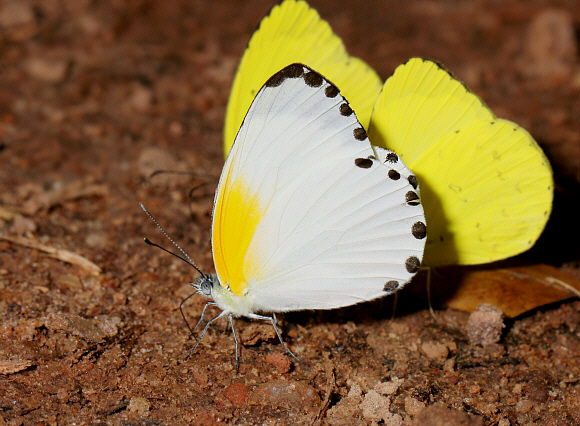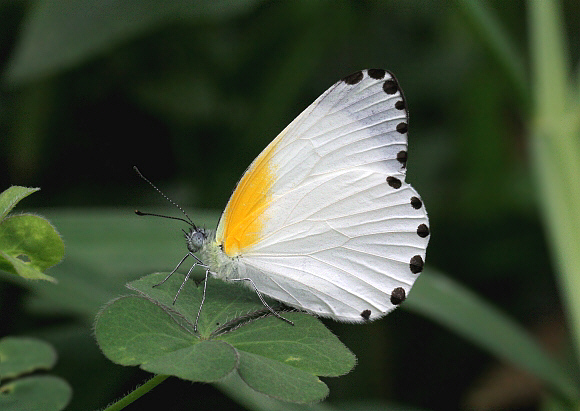
Introduction
The genus Mylothris is confined to the African continent and includes 51 species, most of which are distributed across the forest belt from Cameroon to western Kenya.
Mylothris species share a number of characteristics: They have rounded wings, with a black apex on the upperside forewings. On the underside, fore and hindwings of most species have a single row of prominent black marginal spots, hence the butterflies in this genus are all known as Dotted Borders.
The ground colour of the wings varies from species to species. Some, such as croceus have a deep saffron-yellow ground colour, and others such as humbloti are greyish-buff. The majority of species however are white, but there is often a basal flush of bright yellow.
Mylothris butterflies are sometimes confused with certain Belenois species, but the latter are larger, and have a double row of submarginal spots.
Mylothris rhodope occurs in Sierra Leone, Ghana, Togo, Nigeria, Liberia, Cameroon, Gabon, Zaire, Congo, Angola, Zambia, Ethiopia and western Uganda.
Habitats
This is a forest species, occurring at elevations between sea level and about 800m. It is migratory in nature however, and can be commonly seen in open country during the rainy season.
Lifecycle
The caterpillars feed on Loranthus (Loranthaceae).
Adult behaviour
Both sexes are attracted to herbaceous flowers and flowering bushes, at which they nectar with the wings held half open or fluttering. Males are also attracted to mineralised moisture around the edges of puddles on forest tracks, and can be found singly or in small groups, aggregating with Appias, Graphium and Eurema species.
The flight is slow and deliberate, and in conjunction with the conspicuous appearance is indicative of the fact (supported by experiment) that the butterflies are distasteful to avian predators. It is likely that the toxins within their bodies are derived from the larval foodplants.

